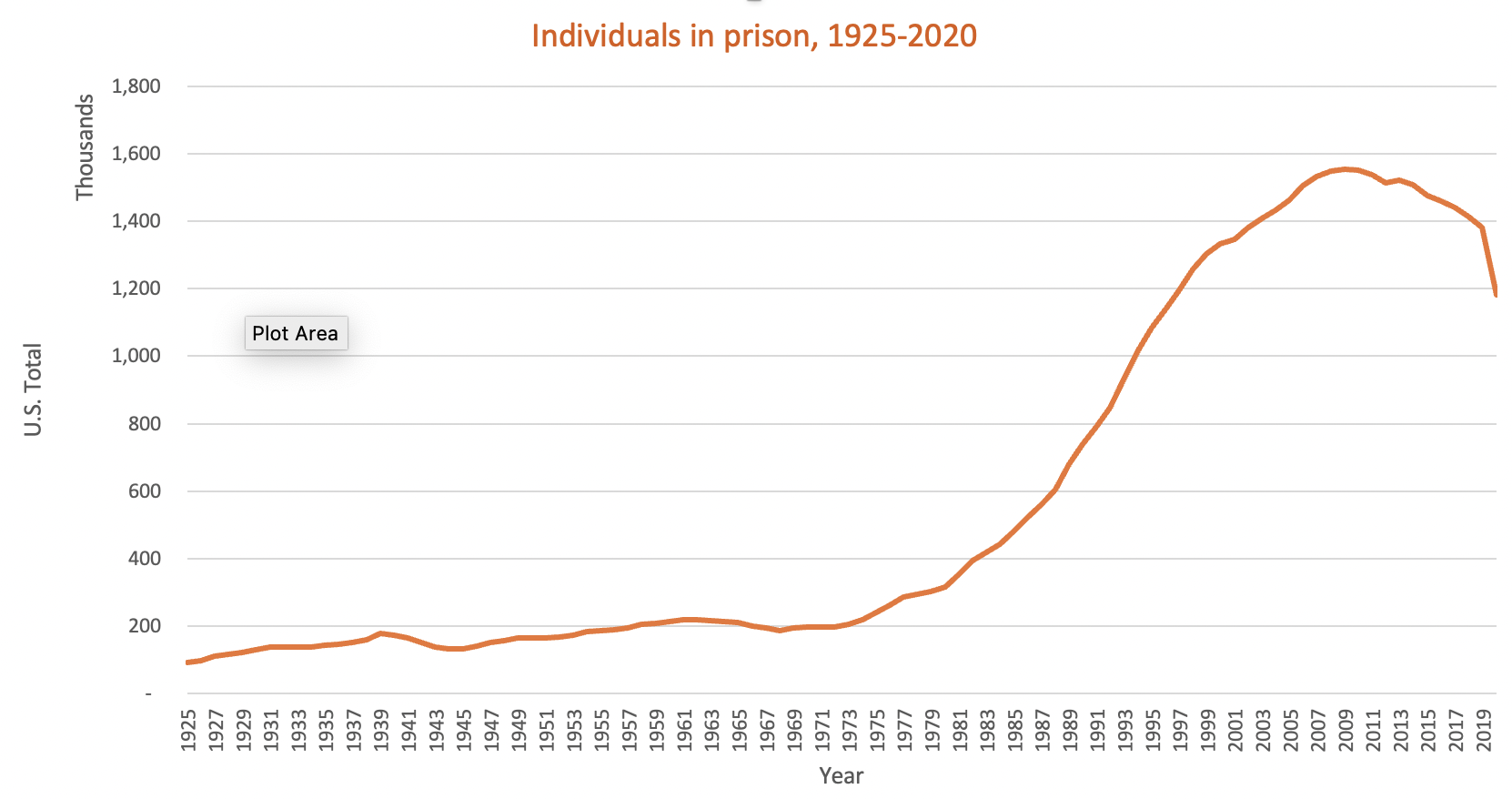10.1. Current Issues: Mass Incarceration
David Carter
Feeling safe and secure in one’s person and home is arguably one of the most discussed priorities in our nation today. Our fear of crime influences how we think, vote, and act day-to-day. It also shapes how we punish people who are convicted of violating the law. In part, punishment reflects the will of the people, which is then carried out by legislators, and converted into sentencing practices. However, has our desire to feel safe led to counterproductive policies? In other words, have these policies made us less safe? Moreover, has a natural fear of crime been exploited by politicians who try to “out-tough” their opponents? This final section attempts to reflect on how our collective fears have created a system of mass incarceration that has paradoxically made some communities less safe and secure, even as crime on a national scale has fallen dramatically since the 1990s. While this text has focused consistently on fear of crime, the influence of persistent racism (periodically inflamed by the Civil Rights Movement, economic recession, and the election of the nation’s first Black president) has undoubtedly contributed to the wars on crime, drugs, and immigration that gave rise to mass incarceration.
To give us a clear understanding about America’s use of prisons, here is a comparison of the U.S. rate of incarceration with that of other countries around the world. As one can see, America uses incarceration quite extensively; in fact, one might argue that we are the “best” at it.
The United States wasn’t always this punitive. As we have discussed, our orientation toward punishment has evolved over time (even if it hasn’t changed dramatically in the last 40 years. In the 1970s, there was a confluence of events that put the U.S. on a path toward mass incarceration – a path that has had lasting effects, as can be seen in the graph below. Below, you can see when the expansion of the correctional system began.

As you can see from the chart above, the uptick in imprisonment dates to the early 1970s. In this periods, the U.S. was in the midst of a period of civil unrest (relating to the Vietnam War, the Civil Rights Movement, and the Women’s Liberation Movement, among other social justice movements), while crime had begun to tick up in the previous decade. Many politicians exploited middle class, white Americans’ unease with such developments, eagerly conflating the rise in street crime with protests, at a time when the economy was increasingly precarious. Elected to office, such officials sponsored “get-tough” policies – such as the War on Drugs – while other factors also conspired to increase the prison population. Notably, the anti-psychiatry movement and the government’s embrace of deinstitutionalization left many individuals suffering severe mental illness with nowhere to turn. The next several sections will explore the diverse policies that conspired to create mass incarceration.
Full Jails?
It is 3:00 AM on a Sunday morning and Terry is getting force-released from jail because the jail is full. Force Releases occur when a facility is at its maximum capacity and a more serious offender is coming in. The decision has to be made in order to protect the community the facility is supposed to protect, but still, maintain the constitutional rights of the individuals it is required to secure. Like many others in the community, Terry made some poor decisions, was arrested for a lower level of crime and has started the process of going through the justice system. However, for Terry, and unfortunately many others, now Terry is being pushed back out onto the street, prior to receiving some basic services that may help him change his behaviors. This is not his fault, it is only due to the fact that a more dangerous offender is coming into the jail, and a decision had to be made.
To make matters more complicated, Terry is a dually diagnosed individual. This means that he has both a substance abuse problem and a low-level mental health issue. Terry has been managing his mental health issue with medications that he is able to afford because of his job at the local Wal-Mart. Now Terry will probably lose his job because he hasn’t shown up for two shifts, due to him being in jail. While not excusing any of Terry’s actions that got him in jail, Terry is now out on the street, without his medication. He is nervous that he is not sure what he is going to do.
This story is more common than you think. It happens to tens of thousands of individuals a year. What should the community do?

